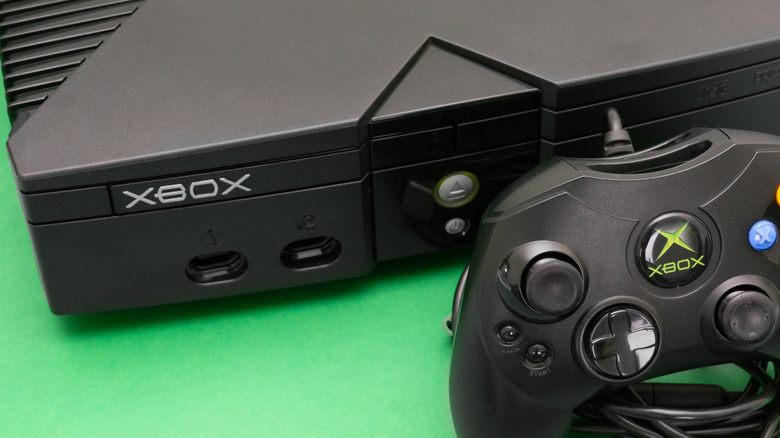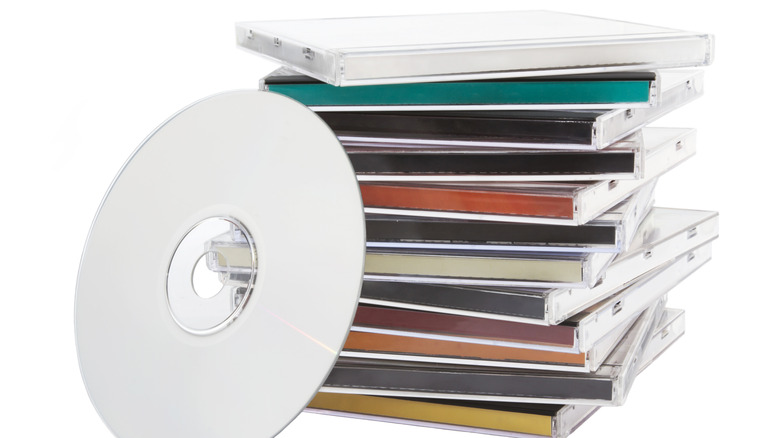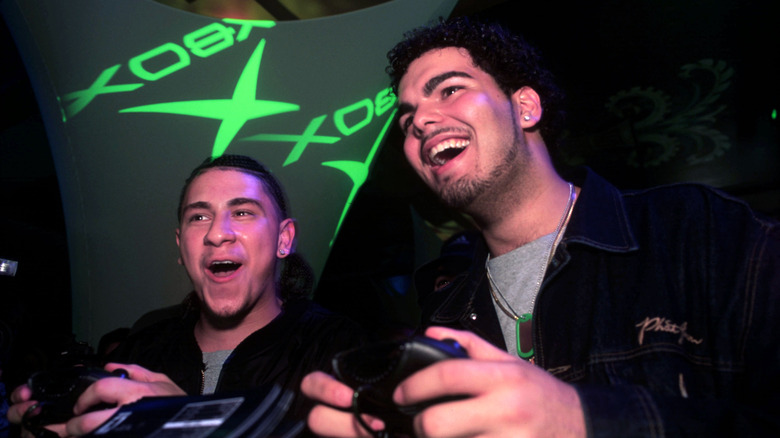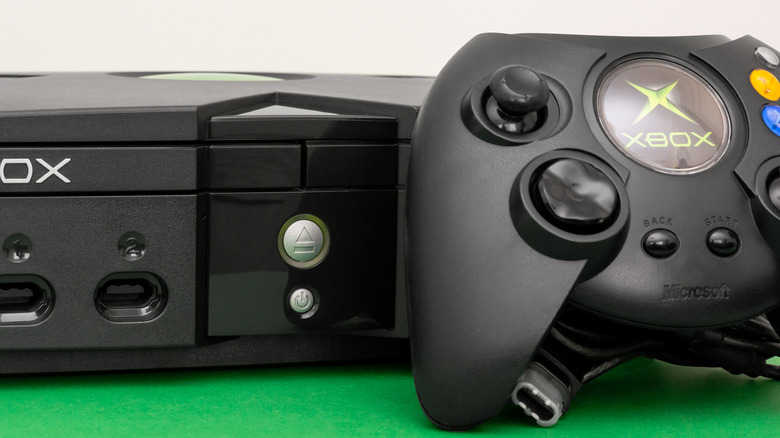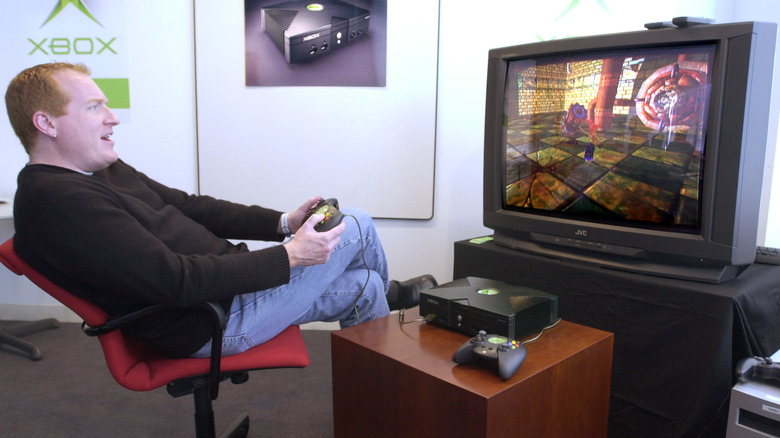5 Forgotten Features Of The Original Xbox That Are Pure Nostalgia
The original Xbox, released in 2001, marked Microsoft's entry into the console gaming industry, and it has come a long way since then. Looking back, the original Xbox was more than just a gaming console; it was a gateway to unforgettable adventures, cherished memories, and lasting friendships. While the console itself holds a special place in the hearts of gamers around the world, several features of the original Xbox are capable of evoking a sense of pure nostalgia.
These features of the original Xbox transport us back to a time when gaming was filled with excitement, personalization, and memorable multiplayer experiences — a time when these concepts were still relatively new in games. These aspects made the original console a unique part of gaming history. Let's dive into five forgotten features of the original Xbox that will take you on a trip down memory lane, showcasing the console's legacy beyond its physical design.
Ripping music from CDs
The ability to rip music from CDs and onto the Xbox is a feature that has since been largely forgotten, but it's fondly remembered by console gamers. Players could personalize their gaming experience by incorporating their favorite songs into certain supported games, enhancing immersion and creating a unique atmosphere.
Ripping the music was easy enough via the Xbox dashboard. By inserting an audio CD into the console's disc drive, users could navigate to the "Music" section of the dashboard and select the option to copy the music from the CD onto the Xbox's hard drive. Music was converted into Windows Media Audio (WMA) files, a format supported by the original Xbox.
The stored music served various purposes, depending on the game. In racing games like "Forza Motorsport," custom soundtracks allowed players to create a personalized driving experience, syncing their favorite tunes with high-speed races, intensifying the thrill of competition. In "Tony Hawk's Pro Skater," players could skate to the beat of their favorite songs, amplifying the sense of rhythm and flow while performing tricks. Later Xbox consoles would incorporate a similar feature by working in sync with apps like Spotify, but there's something about a physical CD that feels totally different.
The original Xbox Live experience
Xbox Live, the online gaming service for the original Xbox, was much different from the version we have today — it didn't have subscriptions, an achievement system, Gamerscore, or multimedia integration with things like streaming services or video apps. Nevertheless, it holds a special place in the hearts of nostalgic gamers because it provided a unique multiplayer experience during the early days of online console gaming and fostered a close-knit community of players. Besides multiplayer gaming, Xbox Live was also where you got downloadable content back in the day for games like "Halo 2."
One of the notable aspects of the original Xbox Live is that it lives on though services like XLink Kai. This platform has preserved the multiplayer functionality of the Xbox and PS2-era games even after official servers shut down. In recent years, third-party services like Insignia have stepped in to revive Xbox Live 1.0, the original Xbox's online servers. Although not officially endorsed or supported by Microsoft, these services offer online matchmaking and leaderboards for a growing list of original Xbox games. This has obviously been an exciting development for gamers who wish to relive the experience of playing these games online.
The Duke
The first-generation Xbox controller bundled with the original Xbox systems, lovingly called the Duke, will immediately take any old school Xbox gamer back to the good old days. The Duke was famous (or infamous) for its large size and unique design.
Originally designed by Denise Chaudhari and her team, the Duke controller featured innovative elements such as its offset thumbstick placement. Its larger form factor appealed to gamers with bigger hands, allowing for a comfortable grip and ergonomic feel. The originally controller boasted precise analog sticks, an eight-directional pad, and an oversized Xbox button with various functions. Despite its bulkiness, the Duke's solid build quality and durability made it a reliable companion for countless gaming sessions.
While the Duke controller lacked wireless functionality and drew criticism for its size, it remains an iconic symbol of the original Xbox era. Third-party accessory makers like Hyperkin have recognized the nostalgia associated with the Duke and released accurate replicas for the Xbox One, capturing the essence of the original controller.
The Duke's impact on future controller designs is also undeniable. Its unique features, such as the aforementioned thumbsticks and oversized Xbox button, influenced subsequent Xbox gamepads and contributed to the brand's unique identity. The controller holds sentimental value for those who grew up with the original Xbox, reminding them of the countless hours spent playing their favorite games (and the occasional hand cramps).
System Link Multiplayer
Before the advent of widespread online gaming, System Link provided a way for players to connect multiple consoles together in one space and enjoy local multiplayer gaming experiences. LAN parties became a popular way to gather friends and compete against each other in games like "Halo: Combat Evolved," which supported up to 16 players across four consoles. The simplicity and immediacy of setting up a System Link multiplayer session added to its charm and made it a cherished feature for many.
LAN parties hosted through System Link offered advantages over online gaming, such as the absence of complex setup procedures. Wired controllers provided reliable and efficient gameplay, ensuring a seamless experience. These LAN parties were not just about the games, but also about spending time with friends and fostering a sense of camaraderie. The joy of gathering in the same physical space and engaging in multiplayer battles added a unique social element to the gaming experience.
System Link multiplayer continued to be supported throughout the lifespan of the original Xbox, with games like "Call of Duty 3" embracing this feature in 2006. Despite advancements in online gaming and the availability of Xbox Live, System Link holds a nostalgic charm for those who appreciated the simplicity and intimate nature of local multiplayer gaming. Thanks to the backward compatibility of the Xbox Series X consoles, players can revive the System Link experience by connecting their current-generation consoles to the original Xbox and reliving the excitement of LAN parties.
Xbox Music Mixer
Wild Tangent's Xbox Music Mixer added a whole suite of new features to the original Xbox, allowing users to transfer music and pictures from a PC to a console, creating a unique and personalized entertainment experience. Released in 2003, it aimed to transform the Xbox into a media center. With Xbox Music Mixer, gamers were given the opportunity to do a bit of karaoke, sing along to their favorite songs, and record their performances using the bundled microphone. It also added a social and interactive element to gaming sessions.
The software provided a range of features to enhance their media experience. Users could create customized soundtracks for photo slideshows, synchronize music with visual effects, and even remove vocals from songs. The 2D and 3D visualizers offered fun visuals that enhanced the overall entertainment value of the experience.
Furthermore, Xbox Music Mixer influenced the development of the Windows Media Center Extender for the Xbox 360, showcasing its impact on subsequent gaming consoles. Although the software may have been considered inferior to other offerings in the market, its charm and unique features still resonated with gamers who experienced the original Xbox era.
